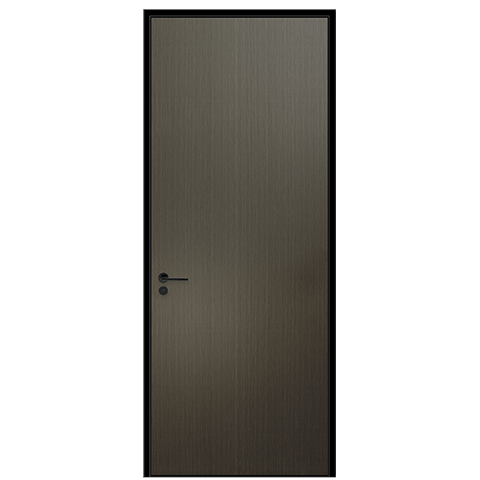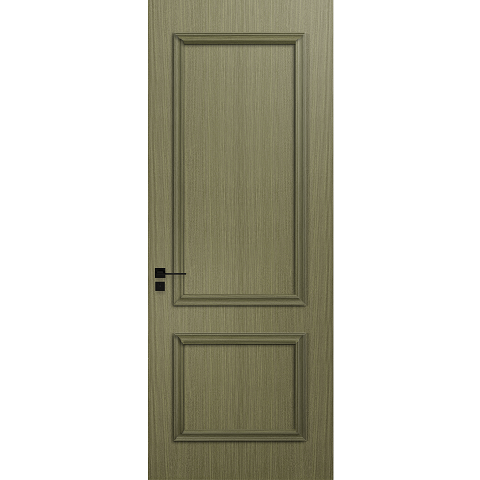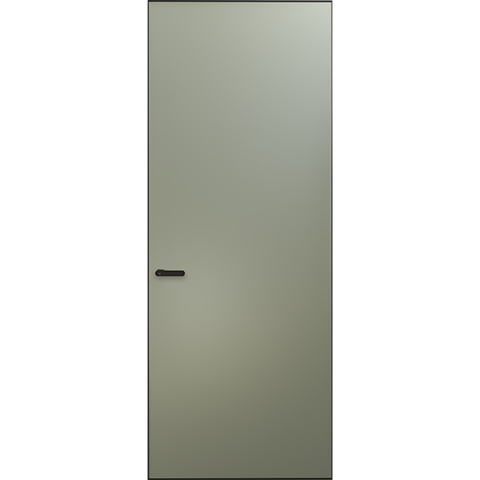What exactly is home improvement door and window sealant?
When it comes to accessories that seem to be "ordinary" in doors and windows, but play an important role, sealant strips will definitely occupy a place.
The sealing performance of a door and window depends to a large extent on whether the sealing tape is selected correctly.
So today we will talk about what is the sealant strip used on home improvement doors and windows, and how should we choose it?
01 The material of the rubber strip
In today's door and window market, EPDM strips are widely used materials.
The reason why it "tops the list" is that compared with other materials of rubber strips, EPDM rubber strips have a "better" price, weather resistance and aging resistance.
As far as the material is concerned, the EPDM rubber strip is a kind of ethylene propylene rubber, which can be represented by EPDM. The main characteristics of EPDM polymers (chemical substances such as ethylene and propylene) are superior oxidation resistance, ozone resistance and erosion resistance, which are suitable for indoor and outdoor environmental changes of doors and windows.
Moreover, the performance of these chemical substances is stable, which improves the anti-aging ability of the rubber strip. The life of the EPDM rubber strip can reach at least ten years.
Based on its own structural characteristics, the performance of EPDM rubber strips is slightly inferior in terms of flame retardancy, oil resistance and adhesion, but the overall cost performance can already beat PVC materials.
Adhesive strips made of PVC (general purpose plastic), Baydee also mentioned in previous articles, are now in a situation where one foot has stepped into the elimination zone.
It will not take long for problems such as poor elasticity and shrinkage of the rubber strip, and the lifespan is also very short, but the low price is the reason why it cannot be abandoned by the market. Some merchants will still choose it to save costs, especially to remind novices , don't be "tempted" by the low price.
02 The process of rubber strip
As the old saying goes, three points are destined, and seven points depend on hard work. The same is true for the sealing strip.
We know from the first paragraph that EPDM rubber strips can become the standard configuration in today's door and window market. It is inseparable from the innate material stability, and the acquired processing technology also has a multiplier effect on consolidating its performance. PVC material is left behind.
A single rubber material is extruded, and then supplemented with carbon black, vulcanizing agent, softener and other auxiliary materials "additives" through a reasonable formula to enhance the stretch, strength and deformation of the rubber material.
Due to the low strength of the EPDM rubber strip itself, only by adding carbon black can it have a higher strength. The increase in the amount of carbon black can increase the tensile strength of the rubber compound; the softener is composed of paraffin oil, and its dosage is relatively large The performance of the ethylene-propylene rubber compound also has a great influence, and the elongation increases with the increase of paraffin oil, and the hardness also decreases.
Among the various steps in the process, the most important is vulcanization and setting. According to the similarities and differences of the methods, it can be divided into two categories: discontinuous vulcanization method and continuous vulcanization method.
The discontinuous vulcanization method is facing the fate of being phased out due to reasons such as the inability to produce products with complex cross-sections, poor dimensional stability, and inability to continue production. Good thermal stability and elasticity.
03 Selection and installation of rubber strips
There are a lot of door and window noobs who feel guilty when it comes to the purchase step. They are afraid that if they don’t pay attention, they will be put together by the merchant. Even if they pass this level, they don’t know how to install the adhesive strips. wrong…
In response to these problems, Baydee made a small summary to avoid lightning for everyone.
1. Purchase
When purchasing sealant strips, we can take a straight-to-the-point approach and ask the merchant, "Does this strip have a brand? What is the brand name? What is the material of the strip? How much is the glue content?"
Start with the brands of sealant strips: Haida (leader of domestic sealant strips), Lianheqiang, Ruide, Chuangyou, Yian, Aosun, Goldstar, etc.
The glue content determines the quality of the rubber strip. The higher the glue content, the faster the rubber strip will return to its original shape after being pressed and stretched. The smaller the deformation change, the better the rubber strip. A content of about 30% is very good.
In the choice of rubber strips, we have to choose the press-in type.
The press-in adhesive strip can be "seamlessly" connected at the corner of the window (when turning), without violent cutoff, thereby improving the overall sealing of the door and window, and making it easier to replace in the future.
You can ask the door and window owner: Are your window rubber strips pierced or pressed. It can also be observed in this way: the notch of the penetrating adhesive strip is longer and shallower than that of the press-in adhesive strip; it can also be observed from the finished window, whether the adhesive strip at the corner of the window is staged, or whether there is glue adhesion Mark of.
Each part of the overall door and window will be equipped with different shapes of rubber strips to achieve sealing performance. If all the sealing strips of a window are of the same shape, then its design for sealing performance may be biased.
The selection of rubber strips in specific parts of doors and windows, such as the window frame of doors and windows, the corner position of the fan, and the hinge position are the weak links connected by the rubber strips. If you encounter obstacles and directly disconnect the rubber strips, it will inevitably affect the overall sealing of the doors and windows.
Some merchants will directly cut off the rubber strip, or cut the rubber strip at a 45-degree angle without any other treatment; a better way to deal with it is to connect the cut-off ports with glue, and then choose a special corner Rubber strips and vulcanized one-piece rubber strips to improve the overall sealing of doors and windows.
Carefully choose the style of the rubber strip, such as a straight flat rubber strip, the thickness of the rubber strip is too thin, and there will be no deformation when the doors and windows are locked.
In addition to the knowledge points mentioned above by Baydee, if you want to distinguish the quality of the sealing strip, you can use one look (the surface of the inferior oil-mixed strip will turn yellow), and two smell (the strip made of PVC is accompanied by a pungent smell. Taste), three-press method (press and press more times to feel whether the resilience is excellent and whether the squeezing feeling is strong).
Open and close the window sash directly, and feel whether there is a squeeze from the rubber strip. If there is no compression feeling on the door and window, it may indicate that the rubber strip cannot play its due effect.
2. Installation
When pressing the inner glass strip, be sure to let the installer press in a little more. For a window with a circumference of 1 m, it is best to press a 1.05-1.1 m strip to prevent the strip from shrinking.
When pressing the corner of the glass inner rubber strip, the installer must not let the installer cut it directly, but ask him to cut a small opening and bend it, so as to ensure that the glass is not disconnected and there is only one connection port, which is sealed well.
The rubber strips have the problem of thermal expansion and cold contraction. In the corners of the window frames and fans of doors and windows, we need to reserve 2-3 cm of shrinkage allowance in advance to prevent the rubber strips from shrinking.
When pressing the corner of the glass inner rubber strip, do not ask the installer to cut it short directly, but ask him to cut a small opening and bend it, so as to ensure that the glass inner rubber strip does not break and there is only one connection port, and it is sealed well.
3. Replacement
When the adhesive strips of home decoration doors and windows appear in the following situations, we must "keep an eye out".
If the sealing strip is damaged, broken, hardened, etc., it will have a certain impact on the sealing of the doors and windows, and consumers can choose whether to replace it as appropriate.
When replacing the glass, it is recommended that the sealing strip can be replaced at the same time. We need to remove the sundries in the notch first to ensure that the gaps on both sides are even, and to make fixed adjustments in time to prevent the glass from colliding and shifting from the center of the notch.
04 Other problems with rubber strips
1. The rubber strip leaks oil
Some friends mentioned that their own rubber strips will leak oil and frost in this winter. I don’t know where the problem is. Can such rubber strips continue to be used?
When the oil leakage of the rubber strip is not very serious, we don’t have to worry too much. This is a natural phenomenon of the rubber strip (the oil caused by the plasticizer, carbon black or reclaimed rubber in the rubber strip is analyzed). It doesn't matter how good or bad the bar is.
What we have to do is to clean the grease on the rubber strip in time to prevent the rubber strip from expanding and causing deformation and sealing failure.
2. Choose rubber strip or glue
Take the rain leakage problem of doors and windows as an example, even if the main sealing strip is done well, the rainwater will directly enter the cavity of the fan profile through the rubber strip on the outside of the glass or the gap between the glass and the profile, which will eventually lead to leakage of the door and window. Go indoors.
It can be seen that in the face of the sealing problem of doors and windows, the sealing of any place cannot be ignored.
In this case, there are two main ways to solve the sealing on the outside of the window-glue strip and glue seal. Baydee believes that when the quality of glue and strips and the construction level of workers are on the same level, there is no difference between gluing and pressing strips. It is still necessary to analyze the specific situation.
In typhoon-prone areas, the safety of the glue strip is not enough, and the glass is easy to move indoors under strong winds. It is recommended to use glue on the outdoor side to be more secure.
Like some severe cold areas, try not to use glue. In the outdoors at minus 20 or 30 degrees, no matter how good the quality and expensive glue is, it will freeze and crack within a few years.
The construction content of the glue strip is lower, neater and more beautiful than the glue, and has a higher safety factor. It is more convenient to replace in the future than the glue (you need to scrape the original glue and do it again). It has already been pressed on the window frame or window sash, and when the drainage holes are reserved, there is no need to worry about water leakage caused by untreated glass outer rubber strips.
When the structural design of some products is not suitable for pressing the rubber strip, glue is used. When the design of the rubber strip is not perfect, glue can also play a role in improving water tightness.
Some friends will ask, so if I want to combine the two, how about installing the adhesive strip and applying the adhesive?
The idea is very bold, but it is difficult to realize. The viscosity of EPDM glue is very average, and the compatibility between the two is poor, so it is impossible to play a good role.
3. The "ceiling" of the sealant
As a consumer, when buying rubber strips, you will always see some merchants claiming that EPDM rubber strips are used in automobiles, ships and even aerospace. It is a hype. Remember Baydee's words, so perfect, it must be fraudulent.
The performance of the EPDM rubber strip is outstanding, but it is not as magical as the gimmick promoted by some merchants.
Among the "thermoplastic elastomeric sealant strips", the thermoplastic vulcanizate sealant strip (TPV) it contains has good heat resistance and oil resistance, and can be used repeatedly. In contrast, the degree of deformation is not as good as that of ternary Ethylene-propylene rubber strips, and polyurethane rubber sealing strips (TPU), are excellent in elasticity and oil resistance, with superior tensile strength and elongation, but the price of raw materials is high.
Therefore, different types of sealant strips have their strengths and weaknesses, and EPDM strips are not the "ceiling" of the sealant strip industry.
 Hot Recommendation
Hot Recommendation
 Latest Products
Latest Products



